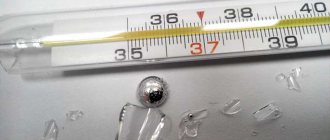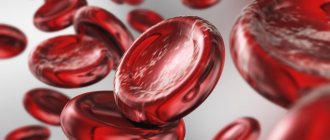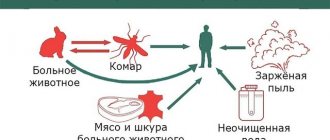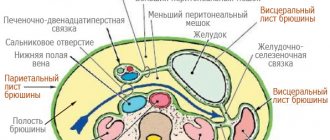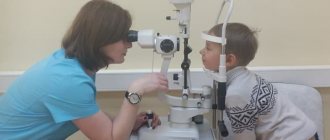General information
Psittacosis is an infectious disease of the respiratory system transmitted by birds.
Also used to describe it are the following names: psittacosis, parrot fever, respiratory chlamydia. The disease is relatively rare. According to medical statistics, about 10 cases of psittacosis are recorded in the United States annually. Most cases are caused by contact with sick pet birds - cockatiels, macaws and other parrots.
The causative agent of psittacosis is the specific bacterium Chlamydia psittaci. It can be carried by over 150 species of various ornamental, agricultural and wild birds, including: parrots, canaries, ducks, chickens, turkeys, crows and pigeons.
Chlamydia psittaci. Photo: PHIL CDC
There are also other types of chlamydia that cause damage to the lungs (C. pneumoniae) and other organs and systems in humans (C. trachomatis), for example, the genitourinary system, joints, eyes, etc.
Medicines
Photo: zagranmaster.ru
Macrolides . Drugs of this group are able to penetrate into cells and create a high concentration there. Since psittacosis chlamydia is an intracellular pathogen, the use of drugs that have the above properties is effective. Macrolides have a low toxic effect, there are no cross-allergic reactions with Beta-lactam antibiotics (penicillins, cephalosporins, carbapenems, monobactams). This means that the likelihood of allergic reactions is extremely low. Macrolides do not cause destruction of bacteria, which prevents the release of intracellular toxins. Approved for use by children.
Fluoroquinolones . Synthetic antimicrobial drugs. There are forms for oral administration and parenteral administration (intravenously). Fluoroquinolones are capable of acting on both extracellular and intracellular microorganisms (including Chlamydia psittaci). Drugs of this group create high concentrations in the blood and penetrate well into various organ systems. The most common side effects are allergic reactions, vomiting, nausea, diarrhea, and insomnia. Fluoroquinolones disrupt the development of cartilage tissue, therefore quinolone derivatives are contraindicated for use in children under 18 years of age, pregnant and nursing mothers.
Tetracyclines have a wide spectrum of action against microorganisms, which include chlamydia. Able to penetrate and accumulate inside cells. Tetracyclines act bacteriostatically: they inhibit the functioning of the 30s ribosomal subunits and thereby stop the synthesis of vital bacterial proteins. Tetracyclines are divided into two groups according to the duration of their antibacterial action: short-acting tetracyclines (tetracycline, oxytetracycline) and long-acting tetracyclines (methacycline, doxycycline). The drugs of the first group act on bacteria for 6-8 hours, they are prescribed 3-4 times a day. The drugs of the second group retain their antibacterial effect for 12-24 hours, so it is enough to take them 1-2 times a day.
The most common side effects are allergic reactions (such as urticaria), tooth staining, and dyspeptic reactions from the gastrointestinal tract. Teeth discoloration occurs due to the ability of tetracyclines to bind to calcium ions and deposit in bones and teeth, giving them a gray color. Tetracyclines are not recommended for use in children under 12 years of age; they are contraindicated during pregnancy and breastfeeding. Tetracycline drugs have high hepatotoxicity, so taking tetracyclines is contraindicated in patients with liver diseases.
Causes of psittacosis
The leading cause of human infection is contact with sick birds. In this case, chlamydia can enter the human body in several ways. One of the most common is inhaling dust particles containing bird urine or feces contaminated with the bacteria. For example, when cleaning a cage or staying in a dovecote for a long time (Fig. 1).
Infection is also possible through direct interaction with a bird, its feathers, eggs, and so on. Examples: stroking a parrot, hand-feeding pigeons, biting, or even simple contact with a bird's beak. In this case, an important point is the contact of dirty hands with a person’s mouth and nose or a direct “kiss” of the bird on the beak.
Figure 1. How you can get psittacosis. Source: MedPortal
In rare cases, you can become infected from another sick person through close contact by inhaling chlamydia, which is released when you cough or sneeze.
Despite the fact that eating meat or eggs of sick birds is also a likely route of contracting psittacosis, there is no evidence of such a route of spread of the disease.
Be careful about psittacosis or why it is dangerous to feed pigeons
Be careful about psittacosis or why it is dangerous to feed pigeons
It should be noted that ornithosis is a particularly dangerous disease common to humans and animals. Among animals, ornithosis mainly affects birds.
The causative agent of psittacosis is widespread in nature. These pathogenic microorganisms belong to the genus Chlamydia.
Under natural conditions, the keeper and carrier of pathogens are pigeons, wild waterfowl (gulls, ducks, petrels, etc.); the pathogen is also found in bullfinches, finches, thrushes, buntings, partridges, tits, siskins, goldfinches, etc.
Under natural conditions, the infection in birds is usually latent, but when such birds are placed in captivity or in other unfavorable conditions, they develop the disease.
Through direct contact, wild birds infect domestic ducks, turkeys, and chickens, which can lead to the emergence of secondary foci of ornithosis in poultry farms. Among the most significant representatives of birds in terms of epidemiological danger are domestic birds (especially ducks and turkeys), rock pigeons (including urban, semi-wild ones), indoor ornamental birds (especially parrots and canaries), as well as waterfowl and colonial wild birds.
Psittacosis is an acute infectious disease that manifests itself as damage to the central nervous system and lungs, fever, intoxication, and an increase in the size of the liver and spleen.
The causative agent of the infection, chlamydia Chlamydia psittaci, enters the human body from the external environment, where it can persist for up to 2-3 weeks and develops intracellularly.
Sources of ornithosis infection in humans are wild and domestic birds: ducks, turkeys, parrots, canaries, budgies and city pigeons.
Currently, the causative agent of psittacosis has been isolated from more than 150 species of birds. Of greatest epidemiological importance are poultry (especially ducks and turkeys), indoor birds (parrots, budgies, canaries and other small songbirds) and especially urban pigeons, the infection rate of which ranges from 30-80%.
Birds are often asymptomatic carriers of the pathogen, when external clinical signs do not appear, but the pathogen is released from the body into the external environment.
Infection can occur through contact with a virus-carrying bird. The infection is transmitted by airborne droplets directly through breathing.
The pathogen enters the body through inhalation of dust, which contains tiny particles of bird feces, and, consequently, chlamydia. In addition, ornithosis in humans can occur after ingestion of secretions from the beak or accidental inhalation of particles of fluff from sick individuals.
What symptoms are characteristic of psittacosis?
With psittacosis, the respiratory tract is affected, pneumonia occurs, the bird develops a runny nose, and sneezes. Paralysis of the legs and wings may occur. However, it should be noted that most often the infection in birds occurs in a latent, asymptomatic form.
In humans, symptoms manifest clearly, with a pronounced clinical picture. The disease is quite severe, and there are family outbreaks when the whole family becomes infected from a sick bird. Human-to-human transmission of the virus is also possible.
Symptoms of psittacosis and clinical picture
The incubation period for psittacosis ranges from 6 days to 2 weeks.
Patients are distinguished between acute and chronic course of the disease, while the acute form is divided into typical (pneumonia) and atypical (ornithous meningitis, ornithosis in people without lung damage, meningopneumonia).
Acute psittacosis. It begins with a sharp increase in temperature (up to 39 degrees), after which patients exhibit the following symptoms:
general weakness, weakness;
headache;
decreased appetite;
severe pain in the muscles of the back and limbs;
runny nose, nasal congestion;
dryness and sore throat.
After 2-4 days, the first signs of lung damage appear: chest pain, aggravated by inhalation, dry cough, discharge of mucopurulent sputum.
If, when diagnosed with psittacosis, the symptoms were interpreted incorrectly and treatment was delayed, chlamydia will have time to penetrate the blood, causing intoxication and damage to various organs and systems - from the adrenal glands to the central nervous system.
The disease is severe and dangerous with complications. And at the same time, it is not so easy to quickly and accurately diagnose, since the clinical picture is characteristic of many diseases affecting the respiratory system.
After an infection, immunity is developed, but it is short-lived and unstable, so cases of repeated diseases are possible.
Is psittacosis curable?
When treating psittacosis, long-term (2-3 months) specific antimicrobial treatment with antibiotics is required.
If the treatment of psittacosis was insufficient or completely absent, the infection becomes chronic. Patients with psittacosis show all the signs of bronchitis, prolonged intoxication, and a constantly high temperature, which, however, rarely rises above 38 degrees. Chronic psittacosis can last 4-5 years or more.
Possible complications of psittacosis
The most dangerous consequences of psittacosis include myocarditis, thrombophlebitis, the development of acute heart failure and hepatitis. With the development of secondary infections, patients experience neuritis and purulent otitis. In pregnant women, psittacosis often causes spontaneous abortions. Intrauterine infection does not occur.
Is psittacosis fatal to humans?
Unfortunately, yes, a person can die from psittacosis, and there are fatal cases.
How can you become infected with psittacosis in an urban environment?
Contact with a sick bird or with a bird that is a carrier of the pathogen. In nature, birds are a natural reservoir for the pathogen of ornithosis. Wild synanthropic birds (not domesticated, but living near humans) can also suffer from ornithosis and be an asymptomatic carrier of the pathogen.
How to recognize a sick bird, and what to do if we find such a bird on the street?
The first signs of a sick bird are that it does not try to avoid contact with a person, and does not try to fly away when a person approaches. The plumage is tousled, specific discharge of a serous or purulent nature flows from the eyes.
Should you make contact with such a bird on the street and try to provide it with some help?
Not recommended!
It should be remembered that ornithosis is a particularly dangerous disease, it is easily and quickly transmitted, and only a small amount of the pathogen is required to cause a pathological process. Nature itself regulates how many birds should exist on earth. The presence of such pathogens in an animal population is a kind of regulator of their numbers. Under special circumstances, the disease begins to manifest itself, and the number of animals naturally decreases.
On our streets you can often find clearly unhealthy pigeons, unkempt, sitting alone on the edges of the sidewalks, not trying to avoid contact with people.
Can you get psittacosis from poultry meat?
This probability is negligible, since we eat thermally processed meat. During heat treatment, if it so happens that ornithosis gets into a poultry farm, the pathogens die. For businesses, this disease is not a problem. Industrial poultry is thoroughly prevented, and if infection does occur, the poultry is destroyed, after which repeated disinfection is carried out, and then new, pathogen-free stock is introduced. But in order for, for example, a chicken at a poultry farm to become infected, contact with synanthropic birds is necessary. And enterprises are very careful to ensure that this does not happen. Almost any contact is excluded, ventilation, air systems, etc. are monitored.
But in zoos it is much more difficult to prevent contact with synanthropic birds. However, veterinarians working at the zoo carefully monitor the clinical condition of the birds kept in the collection and carry out all the necessary preventive measures. There are no cases in the literature of birds contracting psittacosis in a zoo or humans contracting psittacosis when visiting a zoo.
However, it is quite easy to become infected from birds kept at home - parrots. Even the very name of the pathogen - chlamydia psittaci - contains the word psittacus, translated from Latin as “parrot”. Psittacosis is also called parrot disease, these birds are a natural reservoir.
The decorative bird is popular among residents of St. Petersburg. Many people are happy to get or plan to get a parrot or canary.
How to protect yourself and your loved ones from psittacosis?
Contact a veterinary clinic and have the bird examined. A swab from the bird's throat and cloacal swabs are taken. The test results become known quite quickly. If the test is positive, the veterinarian prescribes antibacterial drugs. After the course of treatment, it is necessary to conduct a control study.
However, once again it should be noted that ornithosis is a particularly dangerous disease. A person easily becomes infected, it is difficult to bear, and there is always a risk of a disastrous outcome. So perhaps the owner should have euthanized the bird. The right to choose in this matter remains with the bird owner.
PREVENTION
Prevention of psittacosis comes down to early detection of infection among poultry, regulation of the number of pigeons and sanitary and veterinary measures at poultry farms and other enterprises associated with the cultivation, keeping of birds and the processing of their meat. Quarantine measures are required to check imported products.
Prevention of psittacosis is the only way to prevent cases of infection, since there is no vaccine against this disease yet.
View all news
Who is at risk?
The main risk group is formed by people who directly interact with birds:
- employees of veterinary clinics, pet stores and zoos,
- poultry farm workers,
- breeders,
- people involved in breeding poultry at home,
- owners of parrots and other ornamental birds living in cages.
Photo: anuta23 / freepik.com
Another risk group includes people with weakened immune systems, which increases susceptibility to chlamydia. A decrease in the body's defenses may be due to: HIV infection and AIDS, malignant tumors and their treatment (chemotherapy, radiation therapy), long-term use of glucocorticosteroids (for example, in the treatment of autoimmune diseases such as rheumatoid arthritis), as well as chronic diseases that are difficult to treat (severe heart failure, chronic pancreatitis).
Symptoms of psittacosis
Most people experience symptoms within 5 to 14 days of exposure to a sick bird. At the same time, signs of psittacosis can appear faster, just 2-3 days after chlamydia enters the body, or later - within 19 days.
The most typical manifestations of parrot fever:
- Increased body temperature to 39-40°C with chills.
- Pain and sensation of “soreness” in the throat.
- Runny nose, accompanied by nasal congestion and a moderate amount of mucous discharge.
- Dry cough, in some cases accompanied by expectoration of a small amount of sputum.
- Pain and aching sensation in joints and muscles.
- Nausea and vomiting.
- Diarrhea.
- Diffuse chest pain.
- General weakness, excessive fatigue, malaise.
- Nosebleeds.
- Conjunctivitis: redness of the mucous membrane of the eyes, increased lacrimation, sensitivity to light.
Folk remedies
Photo: krrot.net
In the absence of suitable antibacterial therapy, psittacosis is dangerous due to possible complications: without treatment, chlamydia spreads to other organ systems and causes their degenerative lesions. If similar symptoms appear, or if you come into contact with sick or wild birds, you should seek qualified medical help. After drug treatment, additional therapy with traditional medicine is possible. The use of folk remedies is permissible only after approval by the attending physician.
When treating psittacosis with folk remedies, you can relieve intoxication syndrome and stimulate the immune system with a large amount of vitamins. The following remedies can help in the treatment of psittacosis:
- Viburnum decoction . To prepare it, you need to take 50 g of berries or 100 g of viburnum leaves, add 1 liter of water and boil for about an hour. Then, together with the berries and leaves, the broth is infused in a thermos for 8 - 10 hours, filtered. An adult should drink at least 1 liter of drink per day.
- Rose hip decoction . To prepare a decoction, add 50 g of rose hips to 1 liter of water and boil for 3 hours. After boiling, infuse in a warm place, after 5 hours bring to a boil again and add 50 g of honey. You need to consume the resulting decoction 250 ml 2 times a day. Before use you need to strain.
- Herbal collection . To prepare the mixture, you should take equal quantities of chamomile petals, lungwort, oregano, plantain leaves, rose hips, and licorice root. They are crushed, then 2 tablespoons of the prepared mixture are poured into 500 ml of water and boiled for 10 minutes. After boiling, the broth is infused in a warm place for at least 2 hours. You need to take the resulting drink after filtering 1/3 glass three times a day.
The information is for reference only and is not a guide to action. Do not self-medicate. At the first symptoms of the disease, consult a doctor.
Diagnostics
An infectious diseases specialist deals with the diagnosis and treatment of ornithosis in humans, if necessary, together with a therapist or pulmonologist. One of the key points when examining a patient is interviewing and identifying previous contact with birds, as well as his complaints and objective changes in health status. The final diagnosis is established upon receipt of the results of laboratory and instrumental tests that exclude other infections, for example, salmonellosis, paratyphoid fever, etc.
Laboratory confirmation of the disease is carried out using microscopic and bacteriological analysis of sputum, as well as specific tests:
- immunofluorescence reactions (RIF),
- enzyme immunoassay (ELISA),
- polymerase chain reaction (PCR), etc.
Lung damage (pneumonia) due to psittacosis is detected using chest x-ray, which, if necessary, is supplemented by computed tomography (CT).
Treatment of psittacosis
Treatment is based on antibacterial therapy - antibiotics from the group of tetracyclines, macrolides, and fluoroquinolones. The duration of their use, as a rule, is from 10 to 14 days after normalization of body temperature. After receiving the results of a laboratory test of sputum, the antibiotics used may change in accordance with the sensitivity of chlamydia to them. In case of a protracted, chronic course, it is possible to carry out 2-3 courses of antibacterial treatment with an interval of about 7 days.
To combat individual symptoms and manifestations of psittacosis, it is possible to prescribe antipyretic drugs, mucolytics and antitussives, as well as intravenous drip therapy with plasma substitutes. In the presence of concomitant disorders of the immune system, under the supervision of an immunologist, it is possible to use immunomodulators and immunostimulants.
Sources
- Medical microbiology Pozdeev O.K. / Ed. acad. RAMS V.I. Pokrovsky. – M.: GEOTAR-MED, 2002.- 768 p.
- Chronic chlamydial infection as a cause of demyelination and vasculitis of the central nervous system: some aspects of diagnosis / Yu. I. Vainshenker, I. M. Ivchenko1, I. V. Nuralova2, V. A. Tsinzerling, A. V. Sozina, L. B. Kulyashova, L. A. Berezina, O. V. Narvskaya
- Journal of Infectology. Features of the clinical picture of ornithosis and respiratory mycoplasma infection during the 2012 outbreak L.V. Voloshchuk, A.L. Mushkatina, E.G. Rozhkova, P.V. Zarishnyuk, T.L. Tumina, G.L. Dneprovskaya, M.I. Sadikhova
- Bezdenezhnykh I.S. Ornithosis. Epidemiology, clinic. / I.S. Without money. – M.: Medicine, 1959. – 211 p.
- Bilibin A.F. Epidemiology and clinic of ornithosis / A.F. Bilibin // Klin. Medicine. – 1962. – No. 3. – pp. 34-38.
Forecast
As a rule, with timely and correct treatment, complete recovery occurs.
In rare cases, the disease can cause inflammation of various internal organs: the brain and its membranes (encephalitis and meningitis), the liver (hepatitis) and the inner lining of the heart (endocarditis). It is also possible to develop acute respiratory and/or heart failure syndrome.
Fatal complications occur with a frequency of less than 1:100 cases, that is, less than 1% of cases. The main causes are acute respiratory and heart failure, caused by damage to the lungs and heart, respectively.
Prevention
Prevention of psittacosis is aimed at preventing the transmission of chlamydia from birds to humans. It includes the following recommendations:
- Clean your poultry cage daily and ventilate the area in which they are housed.
- Wash your hands regularly after handling the bird, its feathers or eggs.
- Avoid contact with the bird’s beak, including so-called “kisses.”
- Follow all veterinary recommendations and safety rules when working in poultry farms, farms and zoos.
- Buy domestic and ornamental birds only in specialized stores and from trusted breeders. At the same time, immediately after purchasing an animal, you should take it to a veterinarian for examination.
Psittacosis in parrots
If you keep a parrot, you should carefully monitor its health. Psittacosis in birds is easy to recognize; in sick parrots, the eyes and sinuses suffer, and paralysis of the paws may develop (Fig. 2).
Figure 2. Psittacosis in parrots. Source: MedPortal
A sick animal should be isolated from other birds and contact a veterinarian as soon as possible. Psittacosis in parrots, like in humans, is treated with antibiotics (Fig. 3). You can reduce the risk of developing psittacosis in parrots by changing the water on time and regularly cleaning the cages. New birds should be kept in quarantine for some time before being placed with other pets.
Figure 3. Treatment and prevention of psittacosis in parrots. Source: MedPortal
Experts recommend
Faina Nikolaevna Ryabchuk, Ph.D., Associate Professor of the Department of Pediatrics 2 MAPL (St. Petersburg) recommends the drug Bifidum BAG for chlamydial infection to accompany antibiotic therapy and to strengthen local immunity on the mucous membranes for a course of 2-3 weeks. The species composition of bifidobacteria Bifidum BAG is antagonistically active against chlamydial infection. Mandatory time spacing with taking an antibiotic for 3-4 hours.
“It is the film of beneficial lactobacilli and bifidobacteria on the surface of the mucous membranes that protects against the action of pathogens, maintains health, and allows survival.”
Professor K. Rusch (Germany)

